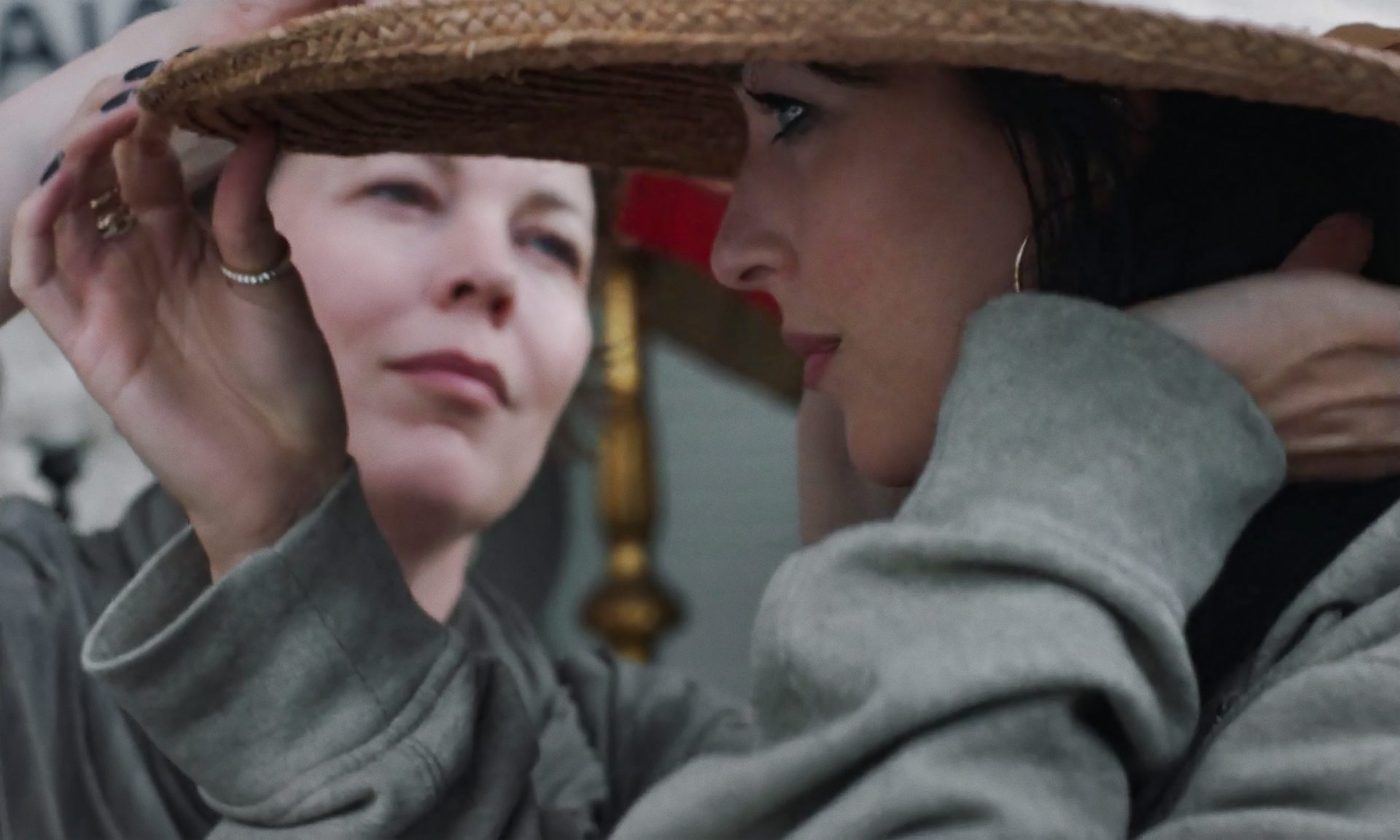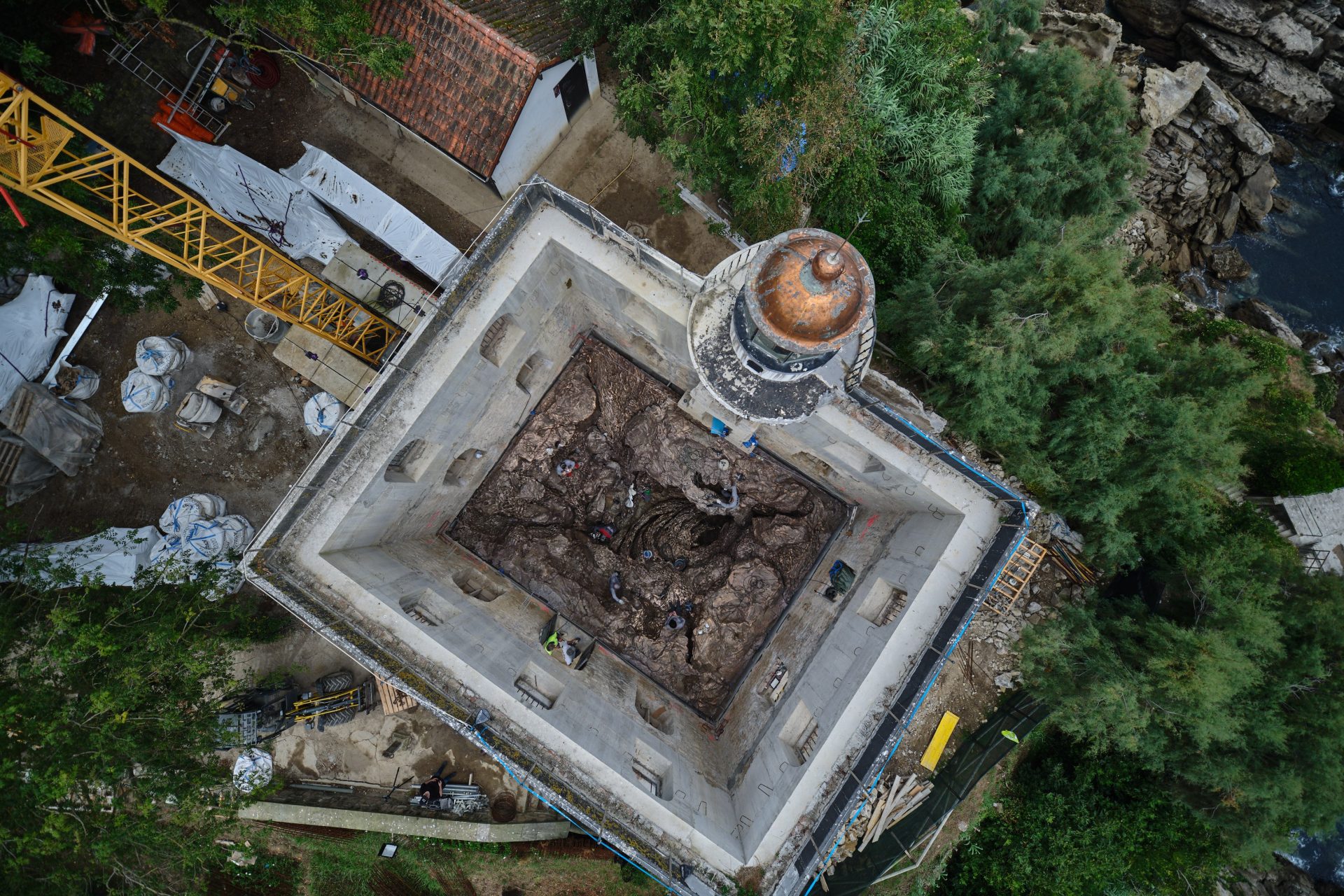Venice may be famed for gondolas and vaporetti but it was the old saying about London buses that sprang more readily to mind: you wait 18 months for huge movies and then they all turn up at once.
Certainly that’s how it felt on a hectic weekend on the Lido’s red carpet where, despite the ongoing pandemic, the biggest stars and names in cinema showed up with their Covid green passes to declare cinema very much alive and open. Now it just needs people to come.
Films playing amid the frenzy of film festivals can get great reviews – critics do like to justify their trip, and moaning about bad movies seems churlish in such a dream-like setting as the late-summer Lido – but that doesn’t always translate into box office success, or even be a fair reflection of its merits to draw you into the cold light of your local theatre on a wet Wednesday.
Kristen Stewart as Princess Diana in Spencer and Timothee Chalamet in sci-fi blockbuster Dune were two of the younger guard representing old-fashioned cinema-going in the post-Covid era being dominated by streaming and in which a tube of hand sanitiser has become the film companies’ preferred freebie giveaway merch.
It’s hoped the patronage of such young stars of this venerable film festival gives the whole movie business a much-need boost over the months to come, possibly leading all the way to the Oscars. They’re in vastly different films, of course.
Stewart should bring her legion of fans from her Twilight days out of the dark to watch Spencer, in which she plays Diana, Princess of Wales in a wildly imaginative film from Chile’s Pablo Larrain, who did a similar thing in Venice in 2016 with Natalie Portman in Jackie.
Portman went all the way to an Oscar nomination with that one, as Jackie Kennedy in the days after JFK’s assassination.
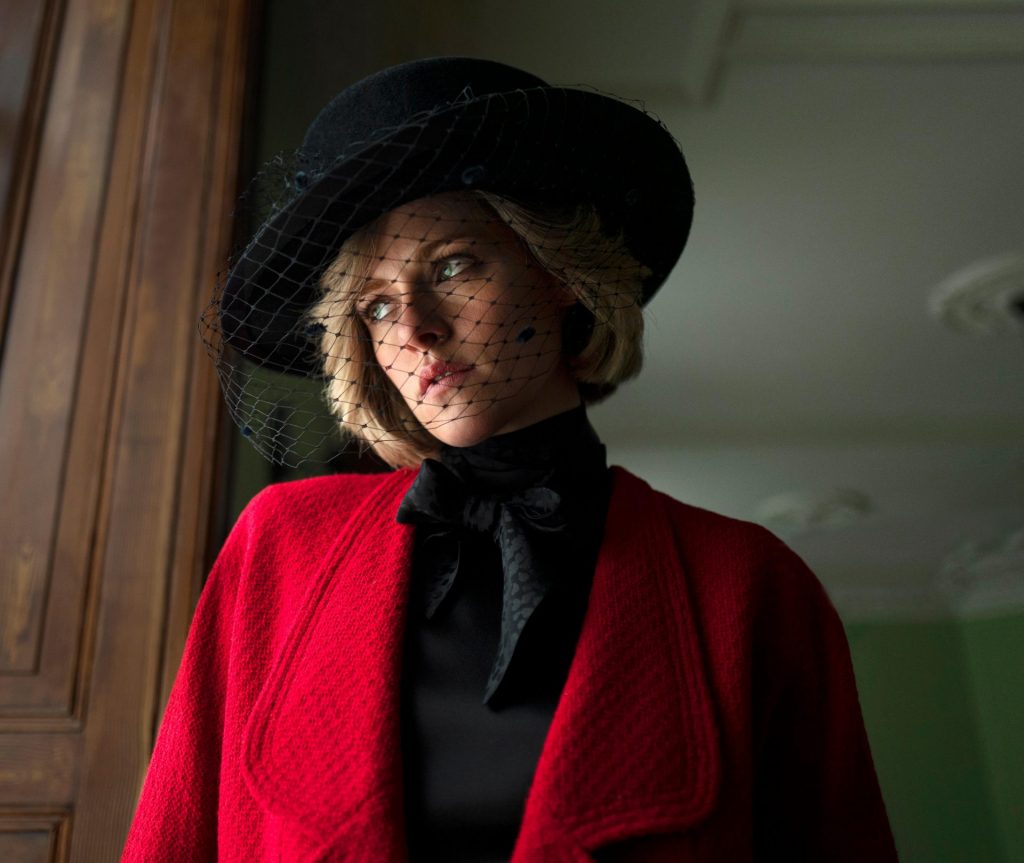
Stewart’s being tipped to do the same, as Diana spiralling in the three chilly days of Christmas 1991 at Sandringham.
It’s a film that might upset more people than it thrills, though there were many of the latter on the Lido.
I’m not sure we need any more screen explorations of the Royals but clearly it’s not just a British obsession and heritage, like sex, sells.
At least this offers some sort of fresh perspective from The Crown and Downton, being more an arthouse fever dream, with Diana vomiting up a pearl necklace into her soup, bombing about in a droptop Porsche, self-harming with wire cutters, swearing like a trooper and dismissing her lady in waiting so that she can masturbate before dinner.
There’s an almost campy sense of gothic horror throughout (do the corgis really travel up in a Rolls Royce of their own?), Sandringham looking nothing like itself because the film was shot in Germany and anyway it’s practically turned into the Overlook Hotel from The Shining, haunted by the ghost of Anne Boleyn who turns up everywhere, even at dinner as Diana loses her head. This isn’t the Queen of Hearts or the People’s Princess, rather a spiky, brattish, spoilt, frazzled, broken and lost woman who has lost all sense of self other than self-absorption and self-pity. She does love her children, though.
I giggled and snorted instead of crying in Spencer. Much of it is ridiculously silly – a conversation with Timothy Spall in a huge fridge surrounded by hams, half-eaten cake and bits of chicken, a chat with a pheasant whom she envies because it “can always wear the same outfit.”
Yet Stewart is never less than convincing and serious, with that little girl posh voice (the accent’s pretty good throughout) and the cloying tilt of the head.
And amid the fragility and institutional bullies, she’s just strong and crazy enough to fight back and fight for herself against this monstrously frosty family and their controlling, patrolling equerries and dressers and footman and chefs in corridors that whisper with rumours and see everything.
I thought of everything from Frozen, The Shining, The Crown and Whatever Happened to Baby Jane?, as well as Shakespeare and Racine, sad stories of kings and tragic queens. The costumes, by Jacqueline Durran, are superb and the score from Jonny Greenwood gets right inside the fury and self-dramatising confusion of Diana’s head.
Perhaps because Larrain is seen as a very serious, even sombre director, the reverential setting of a film festival premiere here didn’t quite suit the mood of what is essentially trying to be an irreverent film – I can see it becoming a camp classic with people shouting “You go, girl” at Lady Di and whispering all these corny lines along with her as K-Stew ascends to Joan Crawford status.
Dune is a thumpingly serious blockbuster, one of the loudest films I’ve ever tried to fall asleep in, where every scene is seduced by its own portentousness, underscored by dread notes from Hans Zimmer that shook the speakers.

It’s an interplanetary space saga based on Frank Herbert’s book about mining the desert planet Arrakis for the most valuable commodity in the universe, a mineral or element called spice.
Stuffed with star turns including Oscar Isaac, Charlotte Rampling, Rebecca Ferguson, Jason Momoa and a scarcely recognisable pantomime baddie in Stellan Skarsgard, the film goes on forever (well, two and half hours) at the end of which, someone just says: oh this is only the beginning. What? Personally, I really don’t want to go through all that again, a sort of Star Wars for grown-ups, directed by Canada’s Denis Villeneuve of Blade Runner 2049 and the alien contact movie Arrival with Amy Adams – he loves to design a big spaceship does Denis, and there are plenty of giant, granite-looking floating behemoths here that cruise into view to booming overtures of grandeur.
I must admit that, as the young prince and heir of the House Atreides, Chalamet is really good, a thoughtful, different kind of hero, a space Hamlet, and that could really bring in the crowds, enough for a possible franchise or ‘universe’ for people who’ve had enough of Marvel superheroes and like a lot of sand and silly names.
The movies need fanboys and girls right now and the millennial thrill of Chalamet with Zendaya getting friendly down in the sand could send Tik Tok into meme meltdown.
Call me old-fashioned but I was far more taken with the traditional big names of European cinema who brought their A-game to the Lido, Pedro Almodovar and Paolo Sorrentino.
Pedro opened the festival with Parallel Mothers, featuring a terrific performance from Penelope Cruz as a single mother finding out her baby has been accidentally swapped at birth. It’s a classically melodramatic premise for an Almodovar film but played less for farce than usual in possibly his most overtly political film as it mixes in his traditional themes – mothers and daughters, roots in the pueblo and lovely apartments in Madrid – with the controversy of excavating Spanish Civil War graves and opening up the wounds of history. I loved it, and cried.
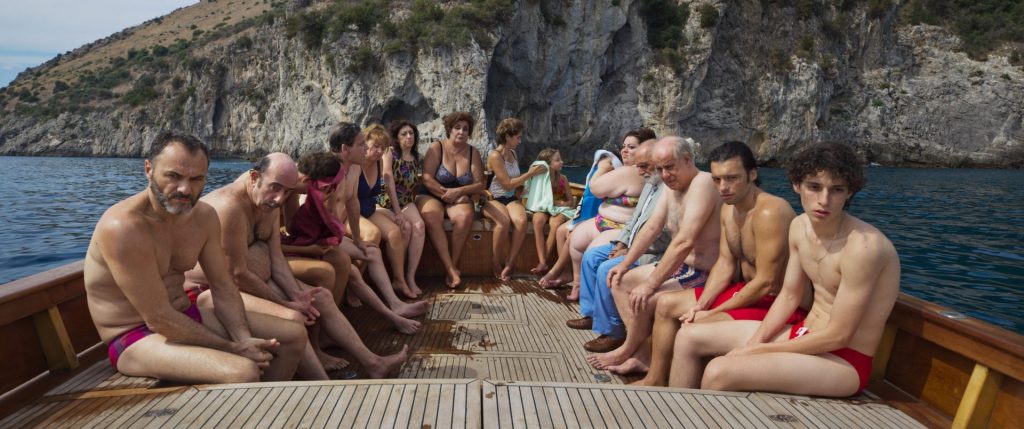
Sorrentino was on wonderfully florid form in The Hand of God, an ode to his own colourful adolescence in Naples, one of the most overstuffed and chaotic cities in Europe, reflected in a film that matches it for sprawling brio.
Set during the mid-80s when Diego Maradona signed for Napoli and scored, with his hand, for Argentina, it’s about Fabio, a curly-haired teenager and dead ringer for the young director, who gets his inspiration from Maradona to forge his own path.
It’s an episodic film, bursting with characters and caricatures, such as the miserable old lady in a fur coat gorging on entire buffalo mozzarellas, the dodgy uncle with his business deals, the self-styled baroness in the flat upstairs, and the very sexy Aunt Patrizia (Luisa Ranieri) who goes topless in front of the whole family and leaves Fabio and his brother drooling.
Fellini-style, there are incidents galore, though not much actual drama, until a certain event unlocks the necessary emotion in young Fabio for him to move on with his sentimental education. I lapped up every second of the adventure.
As the late summer sun warms the Lido, it’s a joy to see all these European locations on the big screen, the squares of Madrid, the bays of Naples, and a Greek island in The Lost Daughter, which features such a good performance from Olivia Colman that you almost shrug with indifference to how good she always is.
In the film, adapted from an Elena Ferrante novel, Colman is an academic, Leda, on a writing holiday in Greece but who enters into a fractious relationship with a boisterous local family on the same beach.
It’s the directing debut of Maggie Gyllenhaal and her rawness shows in the flashing back and forth to the young Leda (played by Jessie Buckley) and her struggles as the mother of infant daughters just when her career was taking off. I found this strand distracting and even unnecessary, much preferring to work out the enigma of Leda’s past behaviour from the complexities of her actions in the present, and trying to read the emotions in Colman’s amazing face and delivery.
For all the Mediterranean colour of Naples and the Greek islands, it was something closer to home that took me by pleasant surprise: Edgar Wright’s Last Night in Soho.
If anywhere has suffered the ravages of lockdown it’s my favourite area of the world, Soho, where I’ve spent the last 25 years of days and nights watching films amid the centre of the British film industry, its screening rooms, studio HQs, edit suites, FX offices and independent production companies. The last 18 months have been devastating for it – anyone who walked its streets during the lockdown can attest to the ghostly, chilling, sad eeriness of its emptiness, as if the heartbeat of London had flatlined.
It might never get back to how it was, with so many bars, dives and little shops closing to be replaced by the chains and corporates and I’ve had to steel myself against heartbreak on recent visits, trying to see the flickers of recovery.
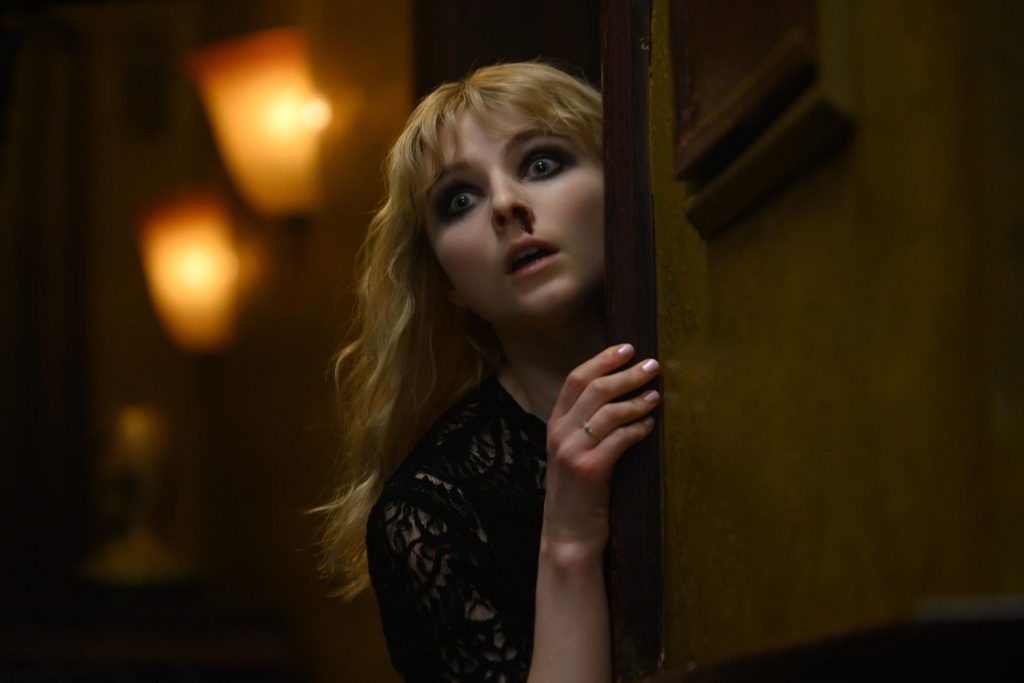
So it was a joy to see the place come back to life, at least on the screen, in Wright’s film, not just once but twice, both as the modern day (well, pre-pandemic) place and as the sleazy swinging 60s locus of cabaret clubs, where the neon lights are pretty and where you can always go.
A grubbier version of Woody Allen’s French fantasy Midnight in Paris, Last Night in Soho has fresher student Eloise (Thomasin McKenzie) coming from rural Cornwall to the London College of Fashion. Her gran – played social realist icon Rita Tushingham – warns her: “London can be a lot,” and it soon overwhelms the 60s-obsessed Ellie when she takes a dingy attic room at the top of a creaky house off Goodge Street, run by the mysterious Mrs Collins (Diana Rigg, in her last performance before her death exactly a year ago).
Playing old 45s on her Dansette record player summons up the ghosts of Soho past in Ellie’s dreams and she imagines herself into the story of wannabe singer and starlet Sandie, played by Anya Taylor Joy in a dirty pink dress and Biba boots.
While the swinging London dreams – accompanied, of course, by a soundtrack of Cilla, The Kinks, Dusty and Dave Dee, Dozy, Beaky, Mick & Tich – inspire Ellie’s fashion ideas at college, Sandie’s singing career starts with a whirl but she’s soon drawn into the sordid Soho 60s underworld of spivs and grubby gentlemen, a nightmare descent that starts psychologically bringing Ellie with it.
Never mind the lingering odours of stale garlic, beer and cigarette smoke, you can practically smell the ghosts of great 60s London films such as Ken Hughes’ The Small World of Sammy Lee, John Schlesinger’s Darling and Roman Polanski’s Repulsion, before it goes a bit 10 Rillington Place.
The film is fun, stylish, energetic, superbly designed and genuinely scary – but unlike some of Wright’s previous films, it remains on track all the way, even as it ratchets up the horror elements and tries to meld its two worlds and two leads, who are both excellent.
For all the themes of mental health, feminism and internal demons that the film touches on, it’s as a psycho-geographical fantasia that it succeeds most for me, a cracked mirror of a film about how alluring and dangerous cities can be, especially somewhere as storied as Soho, where the layers of the past are revealed with the slightest scratch and where tales and legendary characters live on in films, myths, local gossip and, of course, countless songs.
There’s always something there to remind me, trills Sandie Shaw on the soundtrack, and we can only hope that’s true.
At least Wright’s film is a welcome new contribution to the canon of great London movies, something that can ensure those stories, those basements and alleyways and that patina sleazy nocturnal glamour survives to inspire – and haunt – another generation of film-goers.. and Soho regulars.


